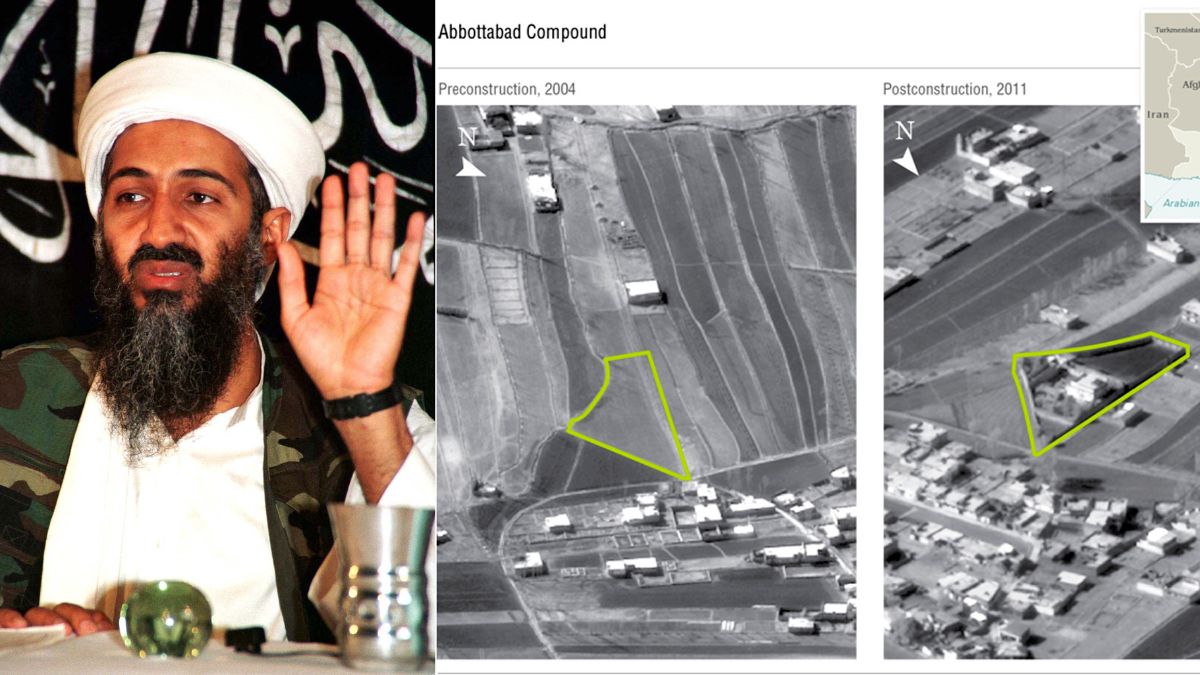In this edition of History Today, we explore three significant events that occurred on May 2: the death of Osama bin Laden, Nelson Mandela’s claim of victory in South Africa’s first democratic elections and the first reported sighting of the Loch Ness Monster.
Osama bin Laden killed in US raid
On May 2, 2011, United States Navy SEALs conducted a covert operation in Abbottabad, Pakistan, resulting in the death of Osama bin Laden, the leader of al-Qaeda and mastermind behind the September 11, 2001, terrorist attacks .
The mission, known as Operation Neptune Spear, was authorised by US President Barack Obama and executed by SEAL Team Six, officially known as the United States Naval Special Warfare Development Group.
The operation was the culmination of years of intelligence gathering and surveillance. US intelligence agencies had been tracking a courier believed to be closely associated with bin Laden.
This led them to a compound in Abbottabad, a city located approximately 120 kilometres north of Islamabad.
The compound was unusual: it was significantly larger than neighbouring houses, had high walls topped with barbed wire, and lacked internet or telephone connections, raising suspicions about its occupants.
In the early hours of May 2, local time, two Black Hawk helicopters carrying the SEALs approached the compound.
One helicopter experienced mechanical failure and made a hard landing, but the mission proceeded.
The SEALs breached the compound and engaged in a firefight. Bin Laden was found on the third floor and was shot and killed. His body was identified through facial recognition and DNA testing. After the operation, his body was buried at sea to prevent a burial site from becoming a shrine.
The death of bin Laden was announced by Obama in a televised address, stating, “Justice has been done.” The operation was widely regarded as a significant achievement in the fight against terrorism.
However, it also raised questions about Pakistan’s role, as the compound was located near a military academy, leading to suspicions about whether elements within Pakistan had been harbouring bin Laden.
Also Watch:
The successful mission provided a sense of closure for many affected by the 9/11 attacks and was a major moment in US counterterrorism efforts.
It also led to the release of numerous documents found in the compound, offering insights into al-Qaeda’s operations and bin Laden’s role within the organisation.
Nelson Mandela claims victory
On May 2, 1994, Nelson Mandela, leader of the African National Congress (ANC) , claimed victory in South Africa’s first multiracial democratic elections.
The elections, held from April 26 to 29, marked the end of apartheid, a system of institutionalised racial segregation and discrimination that had been in place since 1948.
Mandela’s victory speech, delivered at the Carlton Hotel in Johannesburg, highlighted reconciliation and unity.
He stated, “This is indeed a joyous night. Although not yet final, we have received the provisional results of the election, and are delighted by the overwhelming support for the African National Congress.”
The ANC secured approximately 62 per cent of the vote, leading to Mandela’s inauguration as South Africa’s first Black president on May 10, 1994. This historic event marked a new era for the nation, transitioning from decades of oppression to a democratic society.
First modern “sighting” of the Loch Ness monster
On May 2, 1933, the Inverness Courier published a report of a sighting of a mysterious creature in Loch Ness, Scotland.
A local couple claimed to have seen “an enormous animal rolling and plunging on the surface” of the loch.
This account sparked widespread interest and is considered the beginning of the modern legend of the Loch Ness Monster, affectionately known as "Nessie."
Following the report, media outlets from across the UK sent correspondents to the area, and a circus offered a substantial reward for the creature’s capture.
Over the years, numerous sightings and photographs have been reported, though none have provided definitive proof of Nessie’s existence. The legend has become an integral part of Scottish folklore and continues to attract tourists and enthusiasts to Loch Ness.


)

)
)
)
)
)
)
)
)



